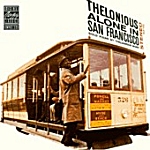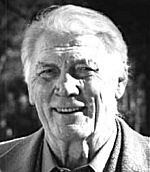|
Move Any Mountain | |
The spirit of obsession moveth where it listeth- like an echo from Moby Dick, the recognition sparks a 'there she blows' when caught in motion. So stumbling across a copy of a 1970's LP of Moog versions of Debussy's music caused a stir of curiosity, there amongst the usual charity shop cast-offs. Once in a while you find something genuinely oddball, a sort of trove, an undreamt-of curiosity. Imagine an LP of Boris Karloff reading from The Go-Between, all English vowels and lisp playing up the haunted gentrified tangle, cricket grounds and hay-strewn lofts. One might exist somewhere, and it would possibly delve further into the bruised, twisted thickets of traumatic childhood memories than even the film. The same kind of superfreaky memories stalk this LP of Debussy reworkings I'm sure, just as Walter/Wendy Carlos's experimental soundscapes are suffused with an air of impalpable resignation, behind the playful deployment of layers of polyphonic synthesizers there's an isolated voice floating in the ether. The kind of schizoid drift which made Glenn Gould such a fan of Carlos, Gould the nocturnal spectre haunting Columbia Studios, penning odes to the three-minute genius of Petula Clark singing Tony 1-latch's 'Downtown', communing with Bach while popping fatal quantities of mood-altering medication. | |
 | Tomita on the reverse of the LP cover proves himself worthy of other celebrators of the body chained to the force of technology. There he sits in the studio wearing futuristic glasses, surrounded by banks of keyboard machinery, wires making connections around him. There's the Tangerine Dream Electronic Meditation, with the child-like body wired up to powerful machinery, Miles so high on octane he looks as if he's strolled out after a Le Mans 24-hour race, Thelonious Monk's covers a genre to themselves, the Solo 1954 with his pilot's goggles, cruising through the air at breathless pace, or Alone in San Francisco with the marvelous Claxton shot of him boarding a streetcar. It's an LP which could have been called Moog Colossus instead of Snowflakes Are Dancing, as it's just as virtuosic a display as Sonny Rollins's famous Saxophone Colossus date, with its reworking of the 'Mack the Knife' theme and the coruscating invention of 'Blue Seven'. Tomita has also performed synthesizer recreations of Mussorgsky's Pictures at an Exhibition and Stravinsky's Firebird, amongst others I'm sure. I'd love to hear these, but for now I'm content to hear the layers of his electronic dissection of the hypnotic dimensions of such Debussy pieces as 'The Sunken Cathedral' from The Preludes, or 'Footsteps in the Snow'. Beautifully mixing the recognized contours of the French impressionistic palette with something wholly alien, he forms an unsettling pattern akin to the effect their first performances would have had on their listeners, wholly innocent yet provocatively riddled with harmonic obscurity. |
 | While Debussy never sparked the controversy of a John Cage or caused a riot in the cinema aisles á la Bu'uel's Un Chien Andalou or L'Age d'Or, it's fair to say that Van Dyke Parks's music has on occasion met with equal parts derision and bafflement. Aside from being blessed with the kind of unforgettable name which mixes a Flemish painter's eye with urban tranquility, my first exposure to his music came with his tinkly keyboard contribution to the first Tim Buckley album, with the William S. Harvey stills, the latter's name curing a long-held curiosity nurtured since Crinkle Their Heads... Felt. Seeing the name of 'Jack Palance', the first song on Discover America, reminds me his music is the perfect analogue to the actor's deformed face, remoulded after a bomb explosion, used to riveting effect by film director Robert Aldrich. If you get a chance, take a look at the credit sequence of one of the most powerful anti-Hollywood films ever, The Big Knife- here his tortured face, hands moving over it seeking some form of solace, not finding it, the DeVol music rising to hysterical heights as the screen gives way to a crumbling mosaic, finally fading to white. Van Dyke's keyboard wizardry, married to seemingly inconsequential lyrics, reveal a disarming engagement with the trivial- behind the fleeting lies a force-field of associations, a carnival in Jamaica where the local pirate has made off with the rum. |
 | Palance as hero and villain, well-known as the black-clad marauder in the western Shane, Parks himself a victim of hero-villain mythology regarding the Beach Boys, reviled for his part in the Brian Wilson break-up. Of course the instrumentation he uses, steel drums and flickering guitar pinned right back in the mix, an acid casualty of a feverish need to apply layers of melody to the point of overripe consistency, all form the perfect canvas to a music of excess bathed in fragmentation. This febrile Poe-esque pot-pourri is the thing which makes his music charming and frightening in equal, Brothers Grimm-style, amounts. He'll namedrop Crosby and the Mills Brothers and everything will feel alright, but it's not the same benign freewheeling obsession of the High Llamas nurturing a Mel Torme-inspired frivolousness. He displays the kind of skewed surrealism Satie made an art of, where titles of pieces are hung loosely onto the barest outline of melodic material, to the point where non-linear development becomes the aim, and the test of a listener's endurance. It's possibly no coincidence that Satie's music, while infinitely rich and beguiling, infuriating and entrancing, has been used as the backdrop to some of the most decentred, introspective films ever made. Orson Welles's last completed film The Immortal Story, and Louis Malle's Le Feu Follet, both featuring Jeanne Moreau prominently, the erotic object loved and lost, both haunted by shrivelled-up male heroes facing death and decay, which shows how the most playful music can have a shelf-life outside its composer's immediate intentions. Certainly he wouldn't have imagined the deftly interpolated strings on the Hubert Laws version of 'Gymnopedie #1', from the great In the Beginning double-LP. Taken at an even more aching pace than usual, the flute finds its airborne path through the instruments around it, like Dolphy before him, imitating bird-song to approximate more closely the freedom of made without recourse to artificial structures. Or Herbie Mann's flute on the bossa nova album with Joao Gilberto and Jobim himself, recorded high above sea-level in Rio de Janeiro, the air quality sharpening the players' engagement with the lilting rhythms of the music, sensuality concentrated in a sustained quest for the perfect note, Jobim's 'One Note Samba'. |
 | Dreams and reminiscence reworking the familiar in a more nebulous, foreign time and place- what these true icons of the unconscious achieve is to take us into an imagined hinterland, the past as a foreign country. Miles's Duke Ellington tribute on Get Up With It does exactly that, in 30 minutes he doesn't directly state an Ellington theme. Instead 'He Loved Him Madly' goes deeper, with reimagined themes sitting alongside tantalizing fragments of recognizable music, floating and twisting round until they attach themselves to something new, not a tribute record in the laboured sense but more tenuous, refracted through loss, tentatively reassembled in the face of absence. © Marino Guida 1999. |